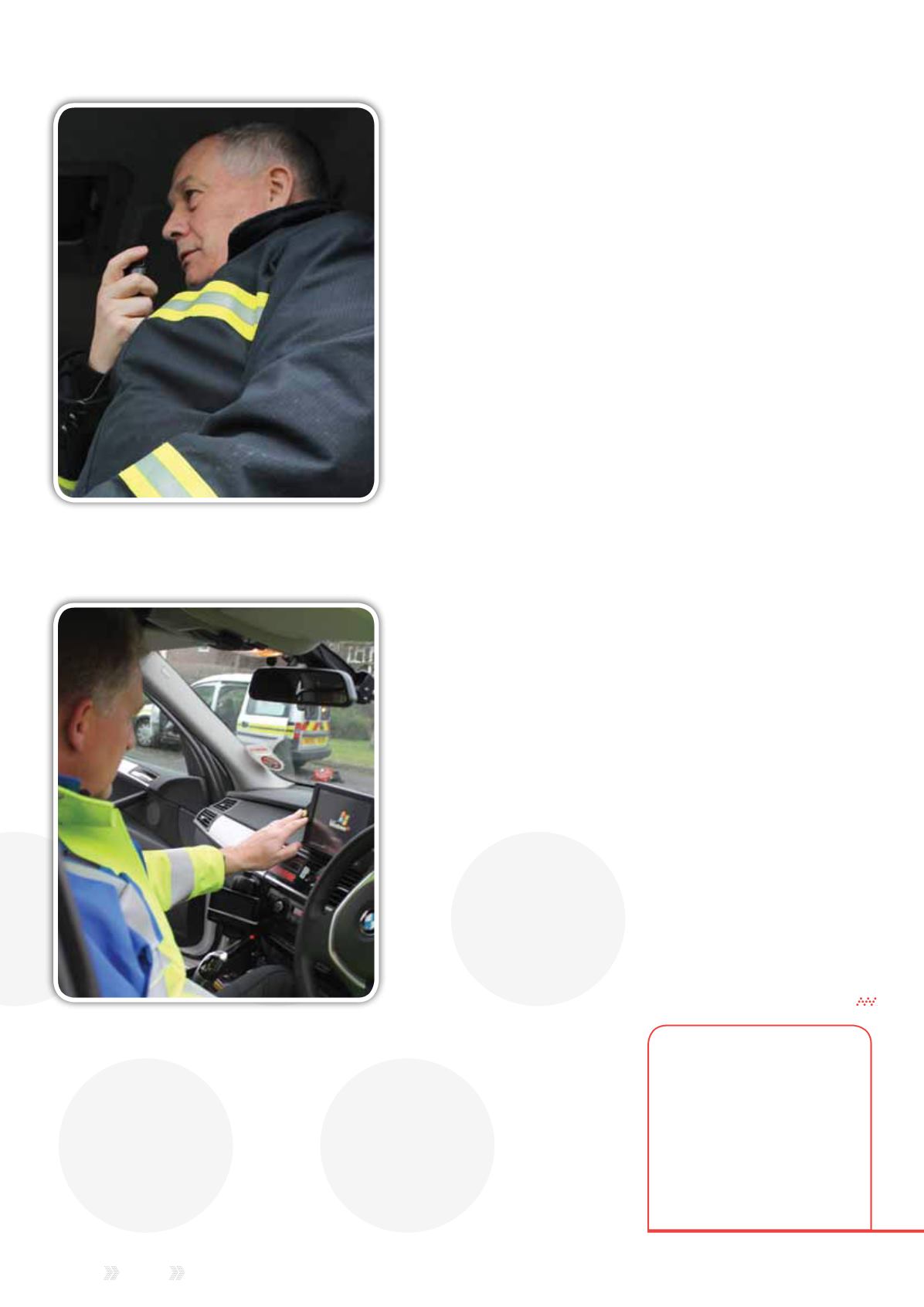
14
|
Reach
Issue 7 2014
Interoperability – unique to
the emergency services since
the Airwave Network came
into being some 13 years
ago – means that for the first
time members of different
public service organisations
can communicate with one
another.
and that I should wait. So I did just that:
I waited. And to their surprise, I was still
waiting when they had finished!”
Chas and Mike started talking.
“Over the years the relationship has
grown as it makes good sense to
work together. And while we initially
started out discussing Hazmat issues,
it has grown to encompass more
operational issues with a key focus on
interoperability,” said Mike.
Chas and Mike set about planning
their first exercise and before long,
they were working with the Joint
Emergency Services Interoperability
Programme (JESIP) to showcase
how they planned ahead for the
events, working with the different
services to ensure that the incident is
as lifelike and realistic as possible.
Encompassed within the
Southampton area is Fawley Refinery,
the largest petrochemical facility
in Europe, which also has a large
number of associated supporting
chemical industry co-located with it.
The city is also home to one of the
largest deep water container ports
in the UK, an international cruise
terminal, Southampton Airport, the
main London/ south coast railway line
with the M27, M2 and M3 Motorways
also running around the city –
Hampshire has the largest mileage of
Motorway network in the UK.
Mike described an example
of where communications
interoperability becomes paramount.
“If we have a hazardous materials
incident, we’re faced with a number
of communication challenges. The
police will not enter the hot zone due
to the potential risks presented by the
materials involved. The Ambulance
Hazardous Area Response Team
will deal with casualties and if
they are wearing body worn video
cameras can go to the ambulance
command vehicle to watch the live
feed. The police can then work with
the ambulance crew to identify the
casualties by communicating with
their command and control officer via
their handsets.”
“Once the casualties are away from
the scene, the police step in, and
manage the contact with families.
There’s no need for each service to
get involved with each others’ specific
responsibilities, but by communicating
on the Airwave Network, we can
ensure that everyone gets what they
need to do their job.”
Mike explained that an exercise
will kick off with a call going to the
control room who in turn inform
the participants. “We do it this way
as it immediately gets people into
the mindset of using their Airwave
handset and highlighting the fact that
if the telephone system was down,
how would we all communicate?”
The exercises are in themselves
complex and are designed to
test resources, relationships and
capabilities, as well as off-site
resources. “When we planned
the first exercise, we knew that
communications were key to the
success of an incident and therefore
one of the things that we insist on
during each exercise is that at some
point we want a participant to talk
to their opposite number in another
agency at a remote point. This
highlights how well they understand the
radio and its functionality,” said Mike.
Work is already well underway for an
exercise which will include all three blue
light services, the RNLI, Coastguard,
Ministry of Defence, harbour master,
ship’s crew and two helicopters.
“There will be nine different points of
contact and each will be on a different
talk group. The purpose of this exercise
is to make it possible for a fire crew to
make their way on to a police launch,
which will then take them out to a
waiting ship to establish a bridgehead.
They will then need to contact the
RNLI and Coastguard to initiate an
evacuation by helicopter,” said Chas.
Onshore will be a full complement of
emergency services personnel who will
all have predetermined roles to ensure
that the incident, despite being an
exercise, will be as lifelike as possible.
“It will be interesting to see how
people who have never worked before
respond under pressure,” said Mike.
“It’s all about sharing information and experiences
with our colleagues,” Chas McGill, Watch Manager at
Hardley Fire Station, Hampshire Fire and Rescue Service,
Eastleigh and New Forest.
“Our relationship has grown to encompass more
operational issues with a key focus on interoperability,”
Mike Batten, Hampshire Constabulary Hazmat Advisor.


